MPEG to OGGConvert MPEG to OGG, MPEG to OGG Converter |
 |
| Home | Getting Started | Download | Buy Now! | Screen Shots | FAQ | Support | Contact |
OGG Video Converter converts MPEG files to OGG format easily and quickly. The software is an ALL-IN-ONE audio converter that supports more than 100 audio and video files. OGG Video Converter supports batch conversion, and is full compatible with 32-bit and 64-bit Vista and Windows 7.
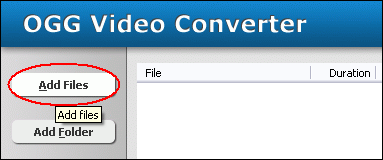 Click "Add Files" to choose MPEG files and add to conversion list. 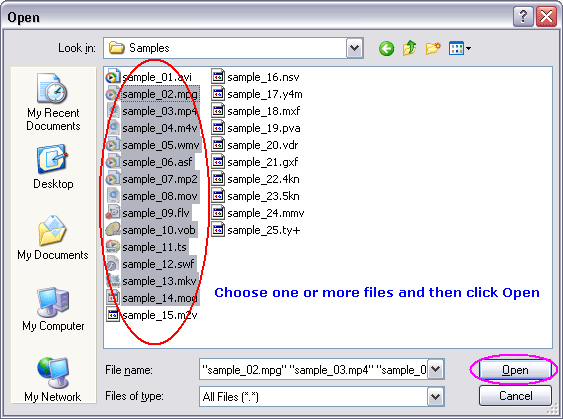 Choose one or more MPEG files you want to convert and then click "Open". OGG Video Converter will open the files and get information such as width, height, frame rate, video bit rate, audio sample rate, audio bit rate, audio channels, and then list the information at conversion list. 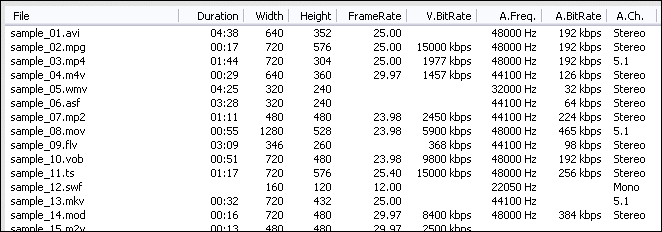
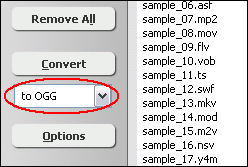
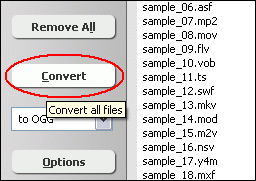 Click "Convert" to convert MPEG files to OGG format.  The software is converting MPEG files to OGG format. 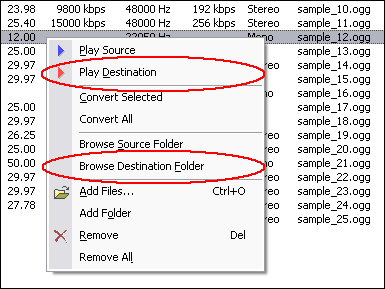 Right-click converted WMA file and choose "Play Destination" to play the outputted WMA file; choose "Browse Destination Folder" to open Windows Explorer to browse the WMA file. What is MPEG? The MPEG standards consist of different Parts. Each part covers a certain aspect of the whole specification. The standards also specify Profiles and Levels. Profiles are intended to define a set of tools that are available, and Levels define the range of appropriate values for the properties associated with them. MPEG has standardized the following compression formats and ancillary standards:
In addition, the following standards, while not sequential advances to the video encoding standard as with MPEG-1 through MPEG-4, are referred to by similar notation:
Moreover, relatively more recently than other standards above, MPEG has started following international standards; each of the standards holds multiple MPEG technologies for a way of application. For example, MPEG-A includes a number of technologies on multimedia application format.
What is OGG? The name "Ogg" refers to the file format which can multiplex a number of separate independent free and open source codecs for audio, video, text (such as subtitles), and metadata. In the Ogg multimedia framework, Theora provides a lossy video layer, while the music-oriented Vorbis codec most commonly acts as the audio layer. The human speech compression codec Speex, lossless audio compression codec FLAC, and OggPCM may also act as audio layers. The term "Ogg" is commonly used to refer to audio file format Ogg Vorbis, that is, Vorbis-encoded audio in the Ogg container. Previously, the .ogg file extension was used for any content distributed within Ogg, but as of 2007, the Xiph.Org Foundation requests that .ogg be used only for Vorbis due to backward compatibility concerns. The Xiph.Org Foundation decided to create a new set of file extensions and media types to describe different types of content such as .oga for audio only files, .ogv for video with or without sound (including Theora), and .ogx for applications. Because the format is free, and its reference implementation is non-copylefted, Ogg's various codecs have been incorporated into a number of different free and proprietary media players, both commercial and non-commercial, as well as portable media players and GPS receivers from different manufacturers. Convert MPEG to OGG Related Topics: MKA to OGG, MP2 to OGG, NSA to OGG, DAT to OGG, DNXHD to OGG, OGV to OGG, MKV to OGG, THD to OGG, M2TS to OGG, MPEG to OGG, H261 to OGG, ADTS to OGG, 3G2 to OGG, STR to OGG, AVI to OGG, VMD to OGG, VFW to OGG, OGA to OGG, MPP to OGG, NUT to OGG, OMA to OGG, DIVX to OGG, PSX to OGG, M2T to OGG, DIF to OGG, VOB to OGG, MJ2 to OGG, EVOB to OGG, F4B to OGG, QT to OGG
|
| Home | Getting Started | Download | Buy Now! | Screen Shots | FAQ | Support | Contact | Links |
| Copyright © 2007-2014 Hoo Technologies All rights reserved. Privacy Policy |